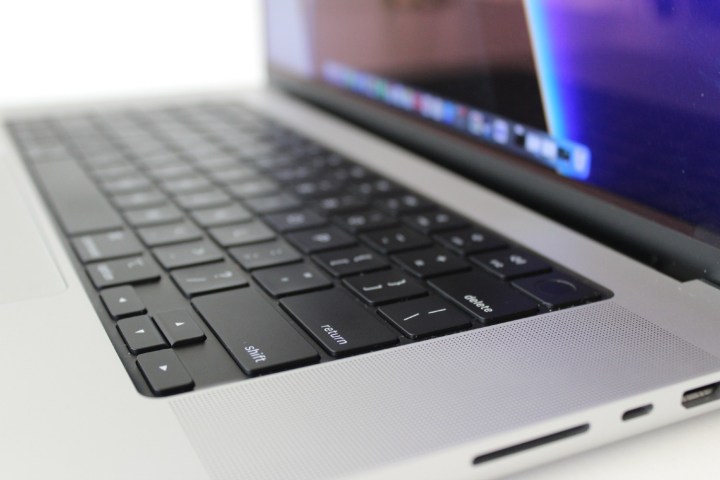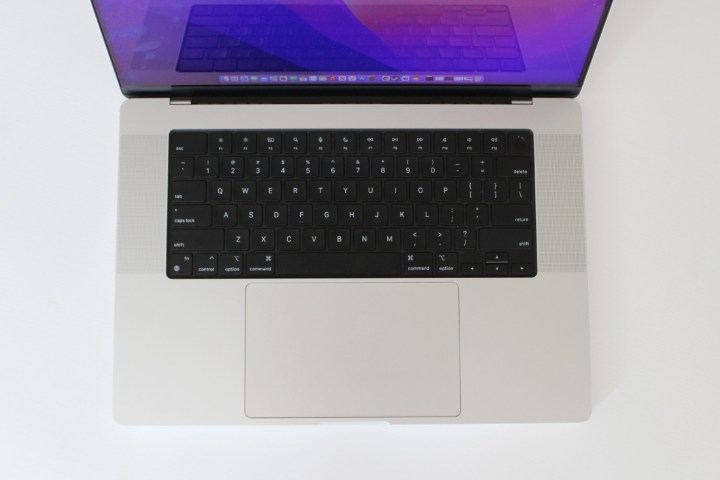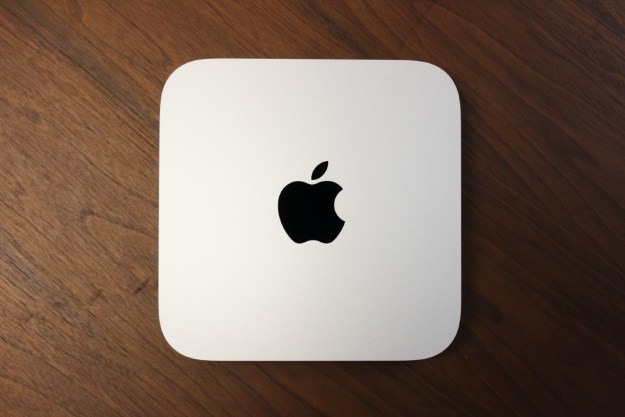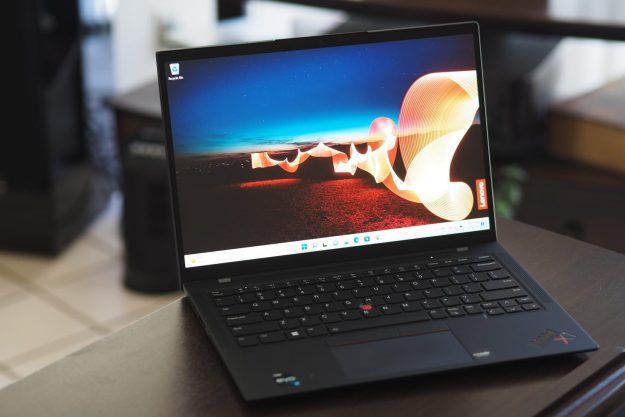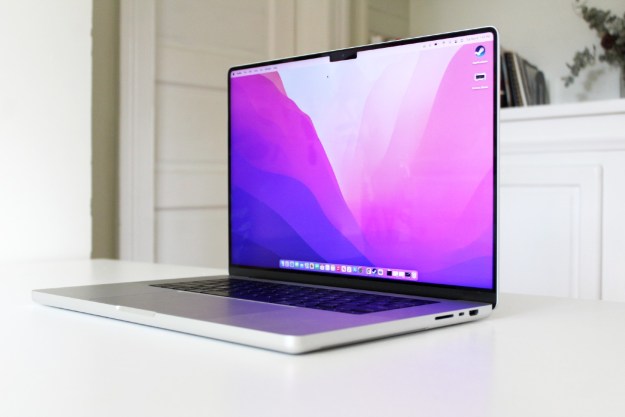
“It's the best MacBook Pro since 2015. And yes, it has a notch.”
- Incredible XDR display
- Fantastic creative performance
- Extensive port selection
- Keyboard and trackpad are perfect
- Excellent speakers and webcam
- Endless battery life
- Notch is a distraction
“We were wrong.”
It’s not a phrase you’ll hear a company like Apple ever utter. It won’t grovel or ask for forgiveness either.
Instead, Apple corrects its errors by putting out a product like the 2021 MacBook Pro. Whether it’s the thickness of the chassis, the Touch Bar, or the ports, the MacBook Pro represents a reversal of nearly every major design decision from the previous generation.
And yet, the 2021 MacBook Pro manages to be more than just a referendum on the 2016 MacBook Pro. It’s bold in ways that make it exciting, yet familiar in ways that keep it convenient. You might even call it the best of both worlds — which is exactly what you want in a “pro” laptop.
One thing’s for sure: They won’t need to apologize for this one. You can even get last year’s model for a discount thanks to this Cyber Monday MacBook Pro deal.
Design

Taking a step back, the 2021 MacBook Pro still very much looks like a MacBook. It’s still made from a unibody aluminum chassis, it still comes in silver or space gray, and there’s still an Apple logo on the lid.
But the changes in this generation aren’t subtle enough to be missed. Black has become the dominant accent color, gracing both the Apple logo and the backdrop of the keyboard. The black keyboard, in particular, feels like a statement piece when so many laptops have copied the MacBook look. Silver laptops with black keycaps has become ubiquitous in the laptop world, and the MacBook Pro’s changeup is refreshing.
It also immediately distinguishes these MacBook Pros from the otherwise similar-looking MacBook Air (and 13-inch MacBook Pro). Like the Space Gray iMac Pro and matching accessories, Apple uses the slightest change in color scheme to give a premium, exclusive feel. That’s why it most certainly includes a black Apple sticker in the box. This is an expensive product, and Apple wants to welcome you to the cool club. It’s not unlike the strategy used in fashion and design industries.
The other small changes to the design include the removal of the “MacBook Pro” logo from the bottom bezel, new rubber feet on the bottom, and ultrathin bezels up top. That bezel comes with a compromise, of course — though that’s not how Apple will hope you view it.
The notch
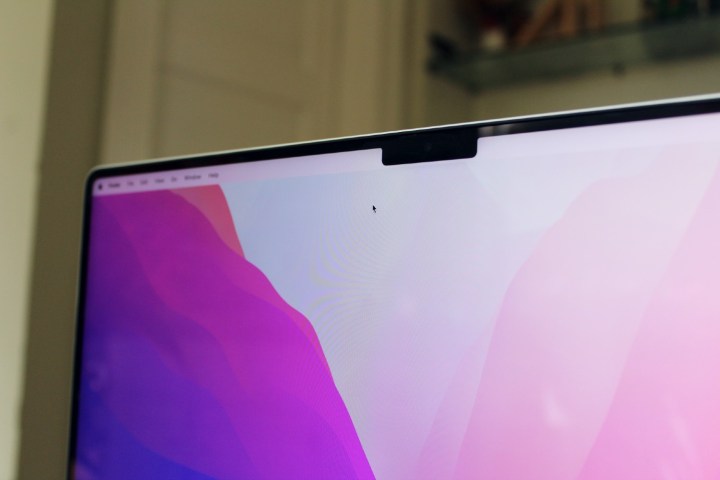
The idea of a notch in a laptop has been something I’ve been wondering about ever since it debuted on the iPhone X in 2017. As companies like Dell pushed forward with razor-thin bezels in the XPS laptops, Apple stayed the course with its thick bezels in the years since then. A notch was even considered as a possibility in the first few years of thin-bezel XPS laptops, but it never came to fruition.
And yet, to the surprise of almost everyone, the 2021 MacBook Pro has a big notch hanging down from the top, housing the camera module and a host of other sensors. It’s a larger and more intrusive notch than what the iPhone has, opting for a boxier shape. And yes, the notch is where Apple houses a number of important components, which would have been very difficult to fit without increasing the bezel size or reducing the quality of the webcam.
I view the notch as a compromise, not a design flourish.
For the first time in a long time on a MacBook Pro, the notch ensures an equal-sized bezel in every direction around the screen, and even allows Apple to introduce rounded corners at the top. In that sense, it bears a lot of resemblance to the screen on the Surface Laptop Studio.
However, the notch is also about branding. It does for the MacBook Pro the same thing it always did for the iPhone, creating a trademark look. Like it or not, it’s Apple’s way of standing out in a sea of identical slabs and clamshells.
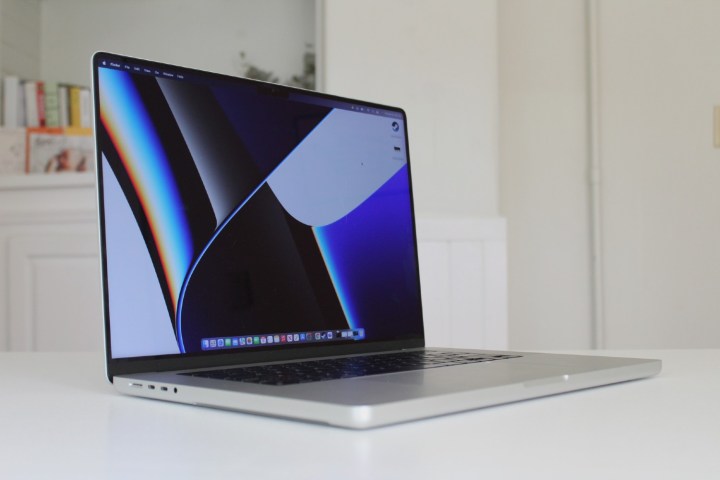
Do I love the look? No, can’t say I do. I view it as a compromise, not a design flourish. That being said, given the options of either a chunky top bezel (older MacBooks) or a poorer webcam (Dell XPS 15), it’s not a bad compromise. The notch seems more intrusive on the 14-inch model, which has less room across the menu bar to accommodate the protrusion.
But it never got in the way in my time with the 16-inch MacBook Pro. And thanks to dark mode, the default wallpapers, and the translucency built into MacOS, the notch wasn’t as notable as I thought it would be. I don’t love that your cursor disappears entirely behind the notch.
Full-screen mode was the one exception. I often use Split View while working, and doing so automatically extends the top bezel over the notch.
For the most part, Apple finds reasonable ways of getting around the notch.
Size and dimensions
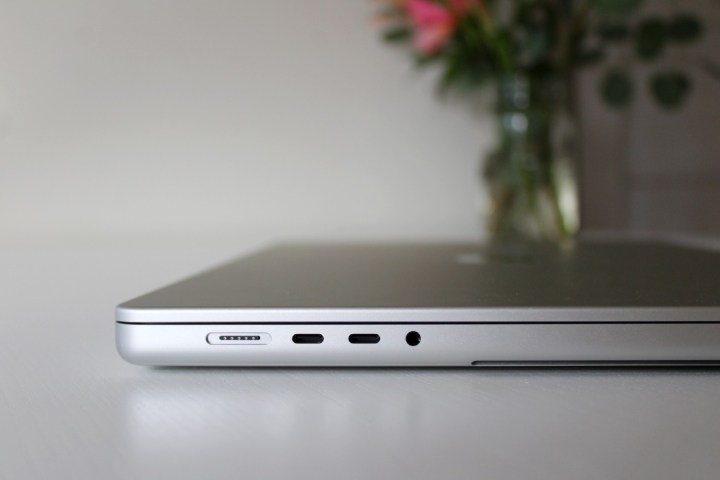
Unlike the previous generation, the primary design tenet of the 2021 MacBook Pro wasn’t being ultrathin. That’s a departure from typical Apple products, but it’s also giving creative professionals exactly what they’ve been asking for. Most would happily trade a half-inch of thickness for some extra performance.
That’s exactly what the 2021 MacBook Pro does. The side profile is thicker and rounder. And as some keen Apple historians have pointed out, it pays homage to an Apple laptop from 20 years ago, the Titanium PowerBook G4.
There are a number of reasons for the thicker chassis, including having room for additional ports and better thermals. I have the 16-inch model, and it’s now 0.66 inches thick and weighs 4.7 pounds. That’s notably larger in both aspects to the previous-generation 16-inch MacBook Pro. The 14-inch is just 0.05 inches thinner, but it’s significantly lighter at just 3.5 pounds. Importantly, the 16-inch MacBook Pro that I reviewed grew in size over the previous, Intel-powered generation, which was 0.02 inches thinner, but almost half a pound lighter.
It’s not often that Apple products grow in size, but then again, Apple’s approach here is unorthodox. Many of the 2021 MacBook Pro’s biggest features are simply undoing what the previous iteration insisted on. The Touch Bar is the most egregious example, and it’s dead and gone on both the 14-inch and 16-inch MacBook Pros.
Ports
It’s no secret the MacBook Pro has reversed course on its ports. While it took entirely too long to get here, Apple has arrived at what I believe is the best possible port selection. You still get three Thunderbolt 4 ports for all the high-powered docking you could need. However, they’re no longer your only options.
First off, charging will primarily happen through the MagSafe 3 power adapter on the left side. What a glorious return! Before the 2016 MacBook Pro, the intuitive MagSafe adapter had always been one of the distinctive technologies behind the MacBook Pro. And now, it’s back.
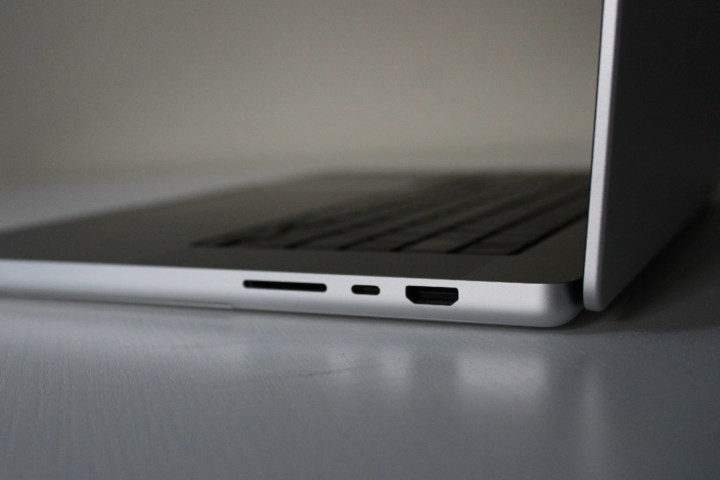
It’s better than ever too. It’s more powerful, capable of delivering up to 140 watts of power. That’s more than you can get charging over Thunderbolt 4. It also feels like it has a stronger magnetic grip, and it is, of course, thinner. It even has a fancy braided cord, which is beautiful. The MagSafe 3 adapter is what comes included in the box, so you likely won’t find yourself charging over USB-C all that often (unless you’re like me and have USB-C chargers plugged into nearly every outlet in the house).
Beyond charging, the MacBook Pro includes an HDMI port and a full-size SD card slot. You don’t technically need either of these. But as a convenience, it’s something the target audience of this laptop will highly appreciate. I do wish Apple had done us a favor and made this an HDMI 2.1 port for the highest possible bandwidth. Then again, that’s far more useful on a gaming laptop right now than anywhere else.
The SD card slot in particular feels like a must. So many of the buyers of the MacBook Pro will be transferring files from a camera to a laptop. This was something Dell brought to the XPS 15 and XPS 17 a couple years back, and it’s great to see Apple follow suit here.
Lastly, the MacBook Pro includes the latest connectivity standards, including Wi-Fi 6 and Bluetooth 5.
Display
The 2021 MacBook Pro marks the most significant evolution in display technology for the line since 2012. That shows just how far ahead of the game Apple was back then, but the competition has clearly caught up. It’s not uncommon to see Windows laptops with excellent color accuracy and saturation, high resolutions, and even the use of OLED screens. The MacBook Pro was still among the best, but laptops like the 4K OLED Dell XPS 15 began to score higher points in our testing.
The MacBook Pro takes back the crown, but not in ways that you might expect. Let’s get to the basic details first. It’s a 16.2-inch screen with a rather odd resolution: 3456 x 2234. That represents an increase in pixel density from 220 pixels per inch (ppi) to 250 ppi. That also means it’s slightly taller than the 16:10 aspect ratio at 15.4:10. That’s the same for the 14-inch model, except with a lower resolution of 3024 x 1964, which equates to a slightly higher 254 ppi.

Regardless of which you pick, this is the first Mac to get the Liquid Retina XDR treatment, which also appeared in the iPad Pro earlier in 2021. These screens are powered by mini-LED rather than standard LED. Mini-LED does not use individually lit pixels like OLED; instead, they use thousands of local dimming zones that allow for deeper blacks and better contrast than LED.
That’s exactly what I saw when I tested the screen with my colorimeter. In terms of black levels, the difference between this and OLED is nearly indistinguishable. Both blow traditional LED out of the water and provide a much larger depth of quality.
To be clear, this MacBook Pro isn’t brighter or more colorful than the previous model. It still hits 100% sRGB and 90% AdobeRGB, as well as 475 nits of brightness. That’s plenty bright, but you might be scratching your head about the 1,000 nits of sustained brightness that Apple claimed in its announcement?
Well, that’s for HDR content. And when it comes to supported content, it looks incredible. I went to YouTube first, and found some HDR-certified videos. If you know about HDR on televisions already, this won’t be a surprise, but the difference in visuals is stunning. Toggling back and forth between Apple’s XDR preset and the standard preset can be done right in the display settings, making it easy to see the difference. Highlights are brighter, the entire video is noticeably brighter, and from a fidelity standpoint, Apple’s XDR implementation really brings colors to life.
This is the best laptop I’ve seen for watching and creating HDR content.
But let’s be real. Very few people are buying a laptop just to watch HDR movies on. It’s still fairly annoying to find HDR content on the web, and it’s even more frustrating trying to ensure that you’re seeing it in HDR.
Fair enough. But the panel is worthy of praise in and of itself, especially since it now includes a 120Hz ProMotion refresh rate. This allows the screen to automatically adjust the refresh rate between 20Hz and 120Hz, depending on what’s happening on the screen.
If you still think high refresh rates are only noticeable or advantageous for gaming laptops, just try toggling off ProMotion and locking the screen at 60Hz. Once you’ve seen it, it’s hard to unsee. Animations and scrolling feel so much smoother. Heck, even the reduced ghosting of the cursor improves the overall look and feel of the system.
While 120Hz is the same refresh rate you’ll find on some other high-end laptops, such as the Surface Laptop Studio and MSI Creator Z16, it is still missing on laptops like the Dell XPS 15 and HP Spectre x360 16. Notably, we’re yet to see another OLED or mini-LED panel that supports 120Hz, making the MacBook Pro’s screen a unique offering at the moment.
Webcam
Apple has brought updates to both the webcam and speakers this time around. First off, it’s the first MacBook Pro with a 1080p FaceTime webcam, which is a breath of fresh air. There’s no way Apple could have gotten away with launching another MacBook Pro with a 720p camera. This upgrade is significant, resulting in a much crisper, smoother feed for your laptop-driven video calls.
Of course, Apple isn’t the only one making laptops with 1080p webcams. The Surface Laptop Studio has one, and the 5-megapixel cameras on HP’s Elite Dragonfly laptops are also impressive. Webcams have never been so important, and laptop manufacturers are finally starting to figure that out.
Apple’s image processing is top of the line, as you’d expect. It really puts the 2021 MacBook Pro in its own league. Now, there were times where I felt the smoothing effects were a little too strong or the color balance a bit too warm. Compared to the 2019 iMac I have at home, for example, it’s a brighter and more processed image. It’s not a perfect webcam, but it’s the best you’ll find on a laptop — bar none.
Speakers
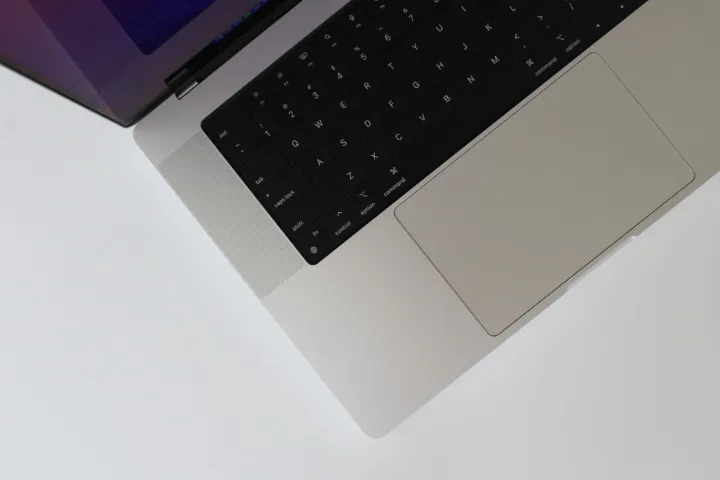
The 2021 MacBook Pro maintains its reputation as offering the best audio experience on any laptop. Apple upped the ante this time around with an upgraded six-speaker sound system. You still get two tweeters and four woofers, but they’ve each been improved for a more robust and bassy mix. The tweeters are both larger, and Apple says the woofers now go a half octave deeper.
That’s a pretty tough thing to test myself, but I can assure you the 2021 MacBook Pros are a refined version of the previous generation. The bass thumps harder and the stereo separation feels wider than ever. Of course, Apple was already so far ahead of the game that these small improvements won’t move the needle for anyone.
The gap between the speakers on the 16-inch MacBook Pro and every laptop can’t be overstated. Laptops like the Surface Laptop Studio and Dell XPS 17 sound decent on their own, but they pale in comparison. The MacBook Pro actually offers an enjoyable set of speakers to listen to music on. They’re still the only laptop I can confidently say that about.
But more than that, chances are these sound better than your average Bluetooth speaker or computer speakers. I’m all for tech that eliminates the need for another type of tech.
Keyboard and touchpad
Like the webcam and speakers, the keyboard and touchpad are, without a doubt, the best you can find on a laptop. No doubt in my mind.
The keyboard features nice springy keys with a cozy 1.1mm of travel. This is the same Magic Keyboard as the one on the previous 16-inch MacBook Pro. This shouldn’t have to be said anymore, but yes, this is the replacement for the infamous butterfly mechanism keyboards of yesteryear. I’ve loved this keyboard ever since it showed up, and it still makes for one of the most comfortable and precise laptop keyboards you can type on.
The Touch Bar is, of course, the big change to the keyboard in the 2021 model. It’s gone. Kaput. And I, for one, couldn’t be happier. I’ll admit to being excited about the idea when it was announced, but after using it for many years, I think it was a flawed premise from the beginning. The Touch Bar never lived up to its promise, nor received the support it needed to grow into something more useful.
So, it’s gone. And it’s been replaced with something less ambitious but far more functional. The function row is back, but somehow improved. Well, Apple did it by increasing the size. They’re now full-sized keys rather than the squat keys you find on nearly every laptop, including older MacBook Pros. The Escape key is even wider, and it’s flanked by Touch ID on the right side. I love these changes.
I’ve always disliked the miniature function keys on laptop keyboards — but it’s the kind of thing I never knew I wanted until I used it. I’ve found that I mistype those keys less often, and I’m not reaching around for them as much. In making these keys larger, though, Apple has removed a few important function keys, namely the backlighting brightness and Launchpad keys. There may be some keyboard shortcut I’m unaware of, but right now, you can change the backlighting brightness in the new Control Panel.
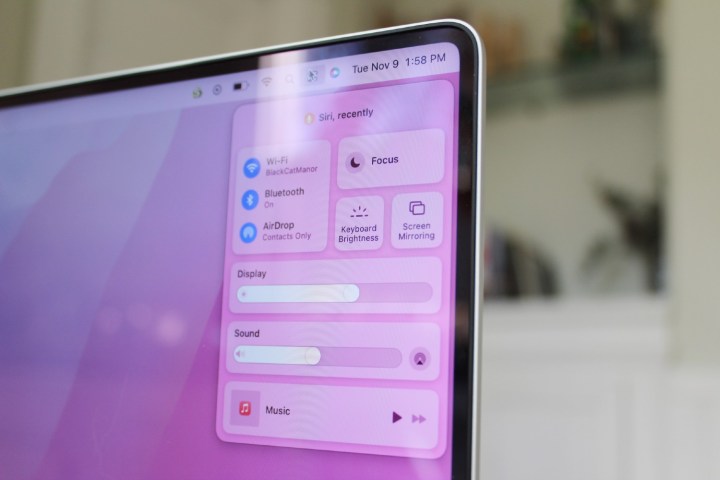
I would have preferred a slightly smaller Escape key to make room for brightness control for keyboard backlighting, but everyone is going to have their own opinion about this.
The reason they don’t, of course, is because the larger the keyboard, the shorter the trackpad. That’s certainly not a concern with the 16-inch MacBook Pro. It remains vast and expansive, with plenty of space for long swipe and multi-finger gestures. The Force Touch Trackpad remains a standout, simulating the feeling of a click using only a small motorized haptic feedback engine. We’ve seen this type of touchpad show up in other laptops like the Surface Laptop Studio, but the extra size of Apple’s touchpad still makes it my favorite.
Price and configurations
Despite all the quality of life updates to the MacBook Pro, it’s really not meant for everyone. That’s truer for this latest generation of MacBook Pros than ever before, especially with the 14-inch model starting at $1,999. That price makes the $1,399 MacBook Pro 13-inch (M1) look downright quaint.
The MacBook Air and 14-inch MacBook Pro make the 13-inch MacBook Pro obsolete, especially since it retains the Touch Bar and lackluster port selection. The MacBook Air remains the best choice for students and anyone else who doesn’t spend most of their time in a heavy application professionally.
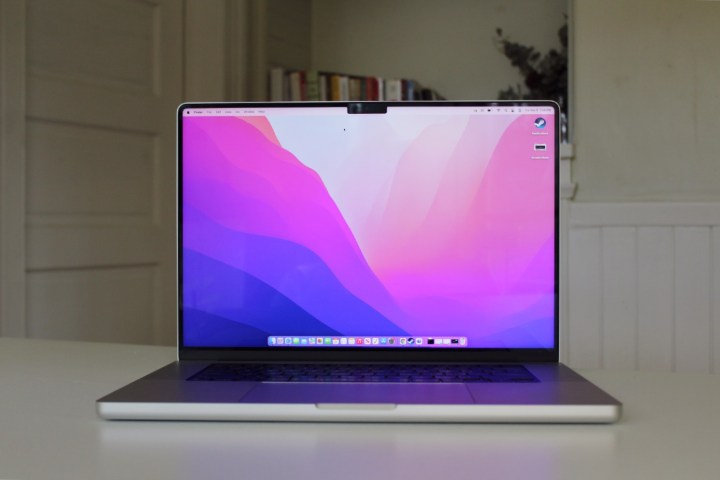
When you bump up to the 16-inch model that I reviewed, you’re paying at least $2,499. My unit came configured with the M1 Pro, 32GB of RAM, and 2TB of SSD storage for a grand total of $3,899.
That sounds like a lot, but the 16-inch MacBook Pro has always been expensive. The starting price hasn’t changed, and you can still spec it up to over $6,000 for a unit with 64GB of RAM and 8TB of storage. The sweet spot for you will depend on what exactly your needs are. Very, very few people will need 64GB of RAM, and the $2,200 Apple charges for 8TB of storage is outrageous. Somewhere in between is likely where you want to be, regardless of whether you end up choosing the M1 Max or M1 Pro.
It’s important to note that there are two versions of the M1 Max, one with a 24-core GPU and one with a 32-core GPU. Essentially, Apple charges $200 for 8 more cores of GPU power. You should also be aware that the starting configuration of the 14-inch M1 Pro uses just an 8-core processor. That’s the same as what you get on the 13-inch M1 MacBook Pro, though the 14-core GPU should provide a significant improvement in graphics.
The lines get blurry for that lower-end MacBook Pro, which is bound to be the most popular of the bunch, but keep in mind that this is first and foremost a laptop made for professional creatives. And for those that actually need a pro laptop, you just found your ultimate tool.
Thanks to the vastly improved performance of the M1 Pro and M1 Max, these MacBook Pros can actually be used as professional machines for content creators. That means photo editors, color graders, website designers, programmers, video editors, 3D modelers, game designers, music producers, and more. If you want to do more than just dabble in these creative fields, dropping the cash on one of these new MacBook Pros is going to pay off.
Performance
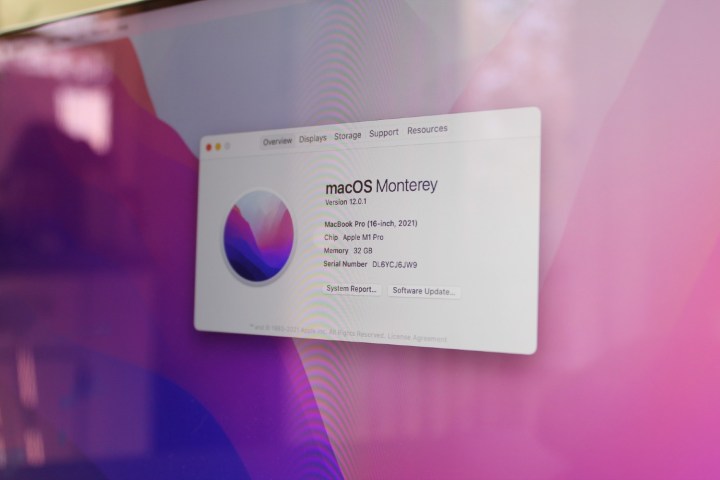
As I get my hands on more configurations of these new MacBook Pros, I intend to make some more precise comparisons between the different models, specifically between the M1 Pro and M1 Max. For now, though, my review unit was the 16-inch model with the M1 Pro. That means it has the 10-core CPU paired with the 16-core GPU, all sharing 32GB of unified memory.
Both of these chips have an extra two CPU cores (for a total of 10) over the standard M1 (featured in the 13-inch MacBook Pro and Air), and that lends a helping hand in multi-core processing. Taking a look at how it scored in synthetic benchmarks, you can clearly see that higher core count flex its muscles.
Its multi-core score in Cinebench R23 was among the highest laptop scores in our database, only bested by the all-AMD Asus ROG Strix G15, which is a thick gaming laptop. The 16-inch M1 Pro MacBook Pro also scored 39% higher than the 13-inch M1 MacBook Pro in this benchmark. The 14-inch model will likely land a bit softer, but that’s still more of an increase in CPU performance than I assumed there would be with just two extra cores.
The real advantage is for applications that can make use of those improved graphics.
Handbrake is another CPU-bound application I tested the machine on, and it had a similar performance gain over the M1. The 16-inch M1 Pro MacBook Pro encoded a 4K video to H.265 38% faster than the 13-inch M1 MacBook Pro. It’s certainly a fast laptop, though it’s beaten by laptops like the Asus Vivobook Pro 16X. Laptops like the Acer Swift X, Dell XPS 15, and Razer Blade 14 were only five or six seconds slower.
But the real improvement here is in graphics. The M1 Max, in particular, offers GPU performance that is meant to rival discrete graphics cards found in competitive gaming laptops and creative laptops. My unit came with the M1 Pro featuring 16 GPU cores, doubling the eight found in the M1.
The graphics are particularly noteworthy feature on the 14-inch model. While I didn’t review that particular model yet myself, the fact that both sizes use the same graphics configuration is a big deal. After all, the previous 16-inch MacBook Pro already featured an 8-core CPU and a discrete GPU. Despite some thermal concerns, it was already a fairly powerful creative laptop. That wasn’t ever true of the 13-inch MacBook Pro. The 14-inch model fills that gap, and introduces a truly powerful option at a smaller size (and a lower price than the 16-inch).

The real advantage here is found in applications that can make use of those graphics. One obvious example is video editing in an application like Adobe Premiere Pro, which now runs natively on Apple Silicon. PugetBench for Premiere Pro tests everything from timeline playback to exporting to applying GPU effects. Here, the M1 Pro impresses, even while running in emulation. The export score wasn’t hugely impressive, though still 29% faster than the M1. An 8-core Intel or AMD processor, combined with discrete Nvidia graphics, will net you a faster export time.
But the MacBook Pro absolutely flies in video playback. It easily nets the highest score we’ve ever recorded in this test, even surpassing gaming desktops and workstations. These are the kinds of tasks the MacBook Pro was designed to run, and it’s certainly one of the best video-editing laptops you can buy. If you opt for the M1 Max model, you’ll likely net a higher export score as well.
The MacBook Pro isn’t alone in this endeavor, though. There’s no doubt that 2021 was a year full of powerful 14-inch laptops, whether it’s the Razer Blade 14, Surface Laptop Studio, or Acer Swift X. Unlike all these laptops, though, the MacBook Pro’s implementation is the cleanest. The surface of the laptop remains pleasantly cool at all times, and the fan noise is nearly nonexistent. It’s hard to compare that to a laptop like the Razer Blade 14 that constantly hums and will leave your palms sweaty.
Gaming performance
Apple didn’t make graphics the focus of the MacBook Pro for the purpose of gaming. And as Apple’s graphics performance increases, that point becomes more and more clear.
Finding heavy games that can provide an actual challenge for the MacBook Pro is a challenge in itself — there just aren’t a lot of modern AAA games available on the platform. But there are some, and I tested out Fortnite, Civilization VI, and Rise of the Tomb Raider.
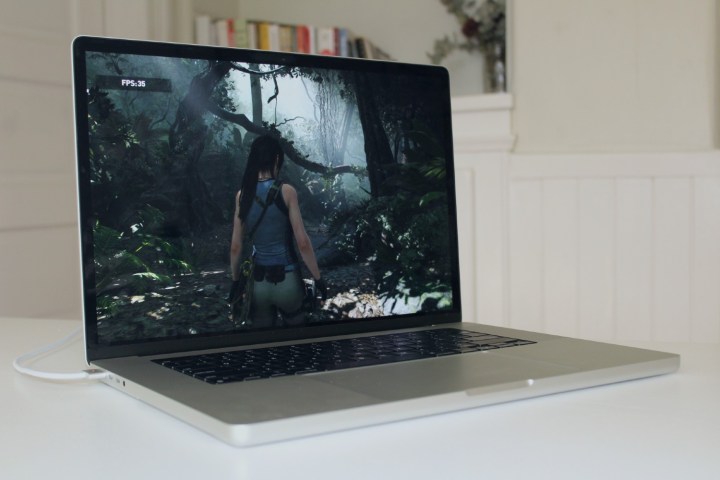
In Fortnite, comparing the M1 Pro to the M1, you can play at High settings at near 60 frames per second (fps), instead of being relegated to Medium. That’s closer to an RTX 3050 or 3050 Ti, which isn’t too surprising. You can find that level of graphics in very similarly sized laptops, such as the Surface Laptop Studio or Asus Vivobook Pro 16X. The main difference the MacBook Pro brings to the table is, again, its lack of fan noise. The MacBook Pro’s fans are essentially inaudible in almost all situations, even while gaming.
The comparison was not as favorable in Civilization VI. The M1 Pro MacBook Pro averaged 64 fps in Medium settings and just 49 fps in Ultra. Being 35% slower than the Surface Laptop Studio shows the importance of optimization. Civilization VI has always performed poorly on the Mac platform, and that’s no different here.
Gaming is still not a reason to buy a Mac, not even on the powerful M1 Max MacBook Pro.
Rise of the Tomb Raider, which is often heralded as one of the few AAA titles that was built for Macs, also struggled to achieve 60 fps on the MacBook Pro. It averaged just 40 fps at the Highest settings in 1920 x 1200, and 47 fps at Medium settings. The Surface Laptop Studio, by comparison, averages 70 fps at Medium settings, which is 33% faster.
Overall, the graphics performance of the M1 Pro are incredible. Even aside from the M1 Max, they would be the most powerful graphics ever in an all-in-one system-on-a-chip package. But they aren’t remarkable in terms of performance alone, especially not on the 16-inch model. We’ve seen 16-inch MacBook Pros with discrete graphics before, and the 16 GPU cores here don’t necessarily blow an equivalent midrange discrete card out of the water.
When it comes to the M1 Max, especially the 32-core GPU option, that may be a different story. I’ll know once I test it out myself, but with twice the GPU cores as the M1 Pro, I expect that it will even improve gaming performance by quite a bit.
But that doesn’t make it a proper gaming laptop. It just doesn’t have the games for that. Unless Apple Arcade really starts taking off, gaming will never be a reason to buy a Mac, not even on the powerful M1 Max MacBook Pro.
Battery life
Since the beginning, efficiency has always been the biggest strength of Apple’s M-series chips. It’s why the M1 MacBook Pro and MacBook Air were already miles ahead of the competition in terms of battery life.
Somehow, the 2021 MacBook Pros take that even further. The 16-inch model that I tested hit a new record in our database in battery life while web browsing. Our custom script cycles through a series of popular websites until the battery dies, and the 16-inch MacBook Pro lasted over 18.5 hours. When I say the MacBook Pro is a multiday laptop, I mean it. Multiple full work days went by for me without needing to recharge it.
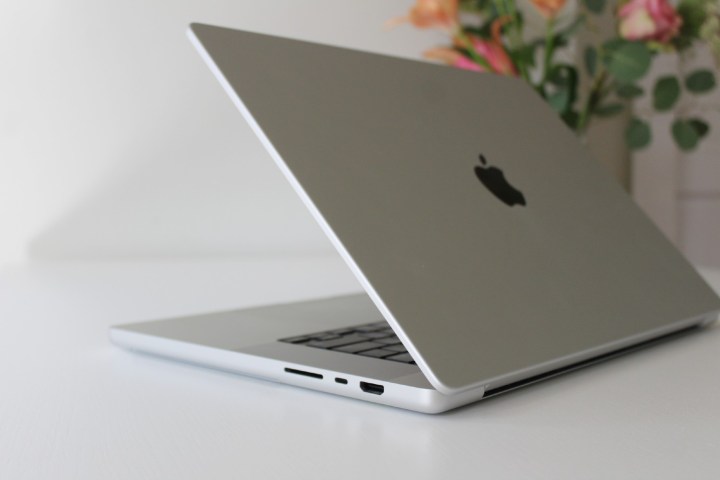
The only laptops that even come close to this amount of battery life are some of the recent AMD Ryzen systems. The Asus Vivobook Pro 16X OLED lasted 16 hours and 15 minutes, while the AMD-powered Surface Laptop 4 lasted 13.5 hours. Far and away, the 16-inch MacBook Pro is the champ. It goes to show how much efficiency Apple can save by not having to put a hot discrete GPU in its laptop.
The standby time is also particularly impressive. If you left it half-charged one day, it won’t be dead a few days later. That greatly extends how long the MacBook Pro feels like it lasts. I just wasn’t reaching for my charger nearly as much.
According to Apple’s estimates, the 14-inch MacBook Pro will have three hours less battery life than the 16-inch model, largely due to the difference in battery size. The 16-inch model has a 99.6 watt-hour battery, while the 14-inch has just a 70 watt-hour battery.
Our take
The 2021 MacBook Pro is the pro laptop Mac fans have been waiting five years for. It’s a return to glory for a product that has felt outdated and underpowered for a long time. It has the best speakers, webcam, keyboard, trackpad, display, battery life, and port selection of any laptop I’ve ever tested. That’s a lot to get right in one laptop. Meanwhile, the performance will satisfy those looking for a machine that can keep with their workflows, especially those working in demanding, creative fields.
Are there any alternatives?
On the Windows side, there are a number of powerful but compact laptops, such as the Dell XPS 15 and XPS 17, Lenovo ThinkPad X1 Extreme, MSI Creator Z16, Surface Laptop Studio, and many more. These laptops all include discrete Nvidia graphics and most include up to 8-core CPUs as well.
There are a variety of reasons to choose one of these laptops over the MacBook Pro. Some are more powerful, some have more interesting designs, and many are cheaper. But none offer the overall package the MacBook Pro does.
How long will it last?
The hope with a laptop this expensive is that it will last at least over five years. The MacBook Pro should be much more easily repaired than in previous generations. While the memory and storage are still soldered on, components such as the battery or the ports seem to be replaceable, which could add years to the life of the MacBook Pro.
As always, Apple also offers top-of-the-line customer support in the form of AppleCare+. It’s expensive, but it greatly extends the standard one-year warranty.
Should you buy it?
Yes. It’s the best MacBook Pro in over a half a decade, and the best laptop for creators you can buy.
Editors' Recommendations
- Apple’s VR headset could launch early, and that’s risky
- Meta Quest Pro vs. Quest 2: a clear choice for VR gaming
- The best HP laptops
- USB-C charging laptops: Here’s what you need to know
- PC gamers are flocking to Windows 11, new Steam survey says
